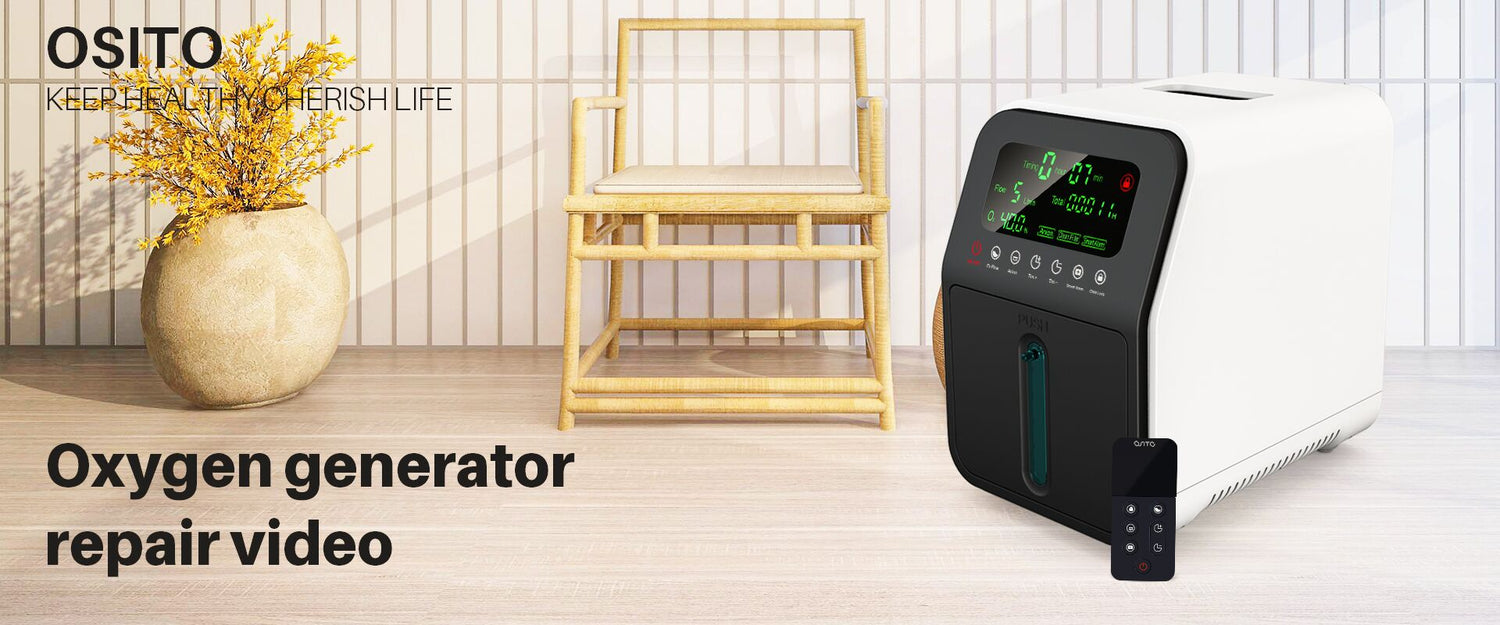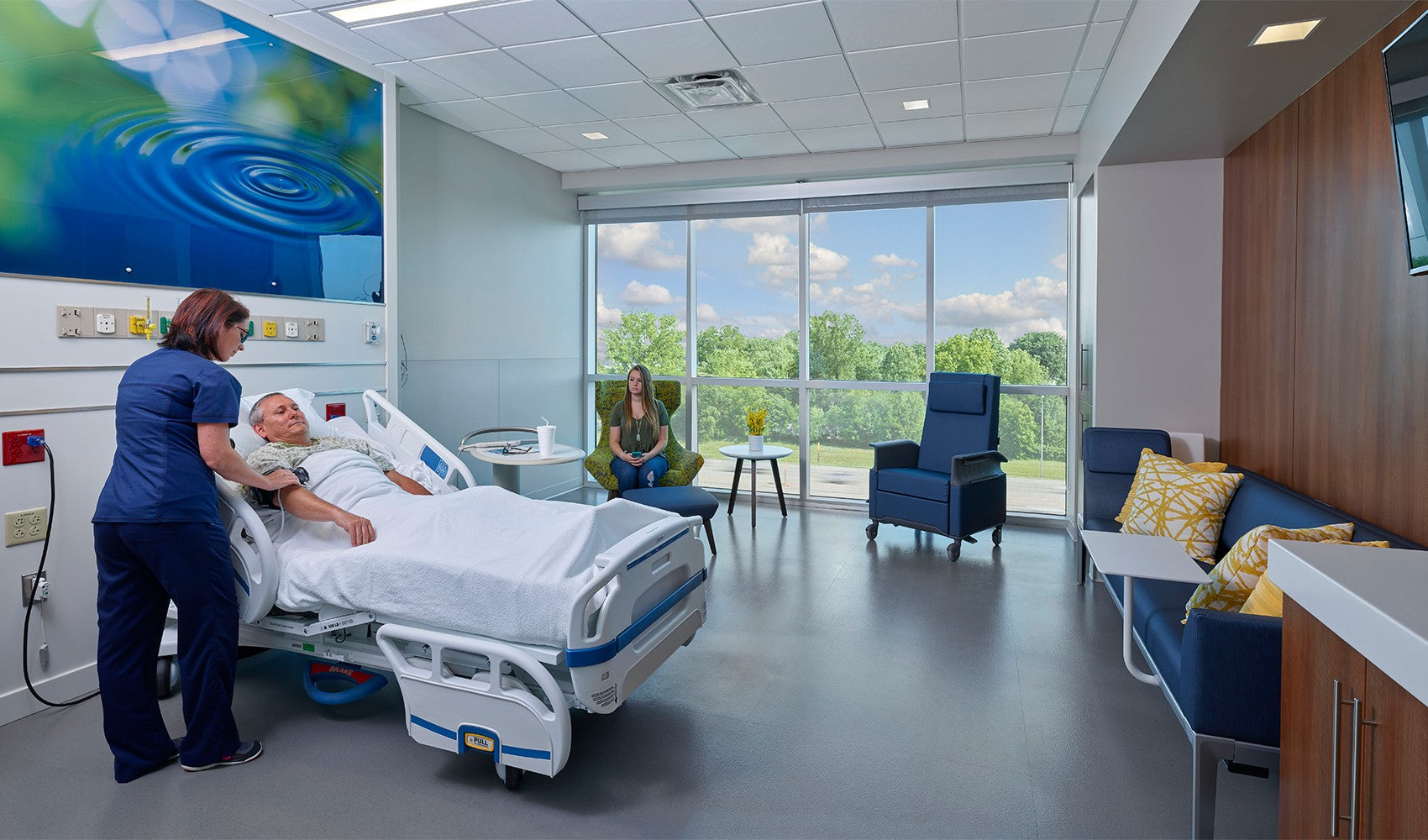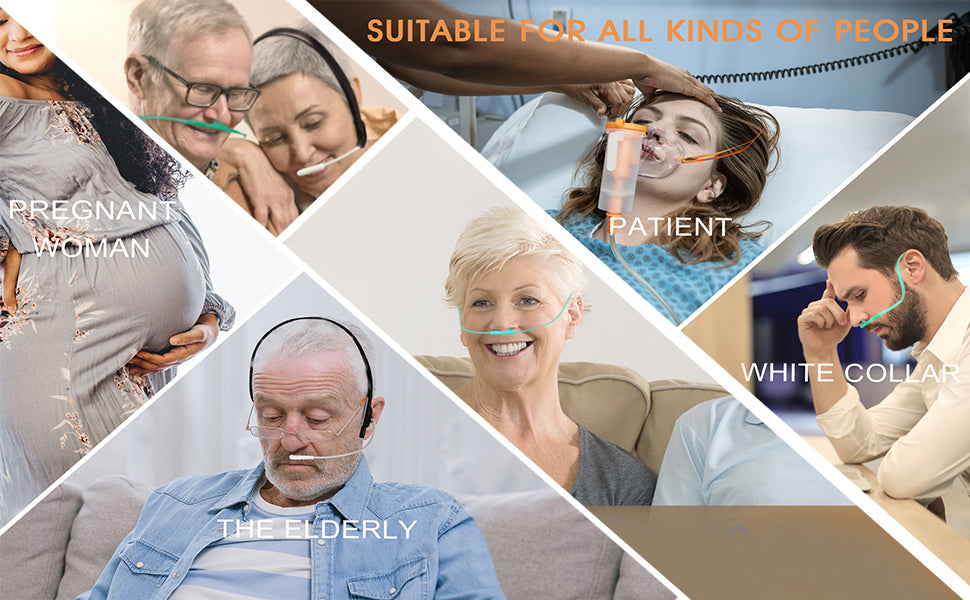What Is an Oxygen Concentrator?
An oxygen concentrator is a medical device that gives you extra oxygen. Air is made up of about 20% oxygen. An oxygen concentrator uses the air in the atmosphere, filters it, and gives you air that is 90%-95% oxygen. Your doctor may prescribe one for you if you have a health condition that causes your oxygen level to drop too low, such as:
- Asthma
- Lung cancer
- COPD (chronic obstructive pulmonary disease)
- The flu
- COVID-19
- Sleep apnea
- Heart failure
- Cystic fibrosis
- Bronchitis
More than 1.5 million Americans use an oxygen concentrator for supplemental oxygen therapy. Oxygen concentrators can be rented or bought, depending on whether you are using it for short-term therapy or long-term treatment.
You need to get your doctor’s OK before you buy or use an oxygen concentrator. Using one without their guidance or a prescription can be dangerous and cause lung damage. If the doctor thinks a concentrator might be right for you, they’ll let you know how much oxygen to take, how long to use the device, and how to use it properly so it doesn't interfere with your daily activities like bathing, working, and sleeping.
Oxygen concentrator vs. oxygen tank
There are two main types of oxygen tanks used for supplemental therapy: compressed and liquid oxygen.
- Compressed oxygen is at least 95% oxygen stored in a metal cylinder. It has a regulator that lets you breathe oxygen in and closes when you are breathing out.
- Liquid oxygen is 100% oxygen in liquid form that you carry in a tank. Oxygen becomes liquid at -297 degrees F. It's compressed to fit into your tank, and when you release it, it turns back into gas. You have to be careful with liquid oxygen tanks because if you are exposed to the liquid oxygen, it can cause a cold-temperature burn or frostbite.
How Does an Oxygen Concentrator Work?
An oxygen concentrator isn’t the same thing as an oxygen tank, which delivers liquid or gas oxygen. Instead, the concentrator is a machine that uses the air around you to make oxygen. The machine pulls air in through a filter and into an air compressor. More filters trap nitrogen and let the oxygen through, where it is collected in a tank. A thin tube runs from the device to your face, giving you this oxygen through two open prongs below your nostrils or through a facemask.
There are two types of concentrators: a bigger model you can use at home, and a lighter, portable model you can use on the go. A typical single-battery oxygen concentrator can last from 2 to 6 hours. A double-battery model lasts from 5 to 13 hours. If your model has a plug instead of a battery, it will work as long as it's plugged in. You will usually need to use your oxygen concentrator for 15 to 24 hours a day.
Portable Oxygen Concentrator
A portable oxygen concentrator, also known as a travel oxygen concentrator, is smaller and lighter than the at-home version so you can use it running errands or while traveling. The device fits in a pack that you carry with a handle or with a sling that goes over your shoulder. Heavier devices may be on a cart with wheels that you pull. Portable oxygen machines run on a rechargeable battery and tend to weight between 2 and 20 pounds.
Because they are smaller, portable concentrators give you less oxygen than an at-home machine. It supplies oxygen by pulse dose, meaning the oxygen comes out in small bursts each time you inhale. Some models can also give you oxygen at a steady flow rate. Talk to your doctor to make sure that you’re getting the right amount of oxygen from either setting. A low-flow travel device usually provides 0.5-5 liters of oxygen per minute. A high-flow machine can produce as much as 10 liters per minute.
How do I use a portable oxygen concentrator?
Follow all of your doctor’s directions and the instructions that came with your device. You’ll also want to:
- Carry an extra battery. Even though your device’s display panel should tell you how much battery life is left, bring a spare with you in case you won’t be home for a while.
- Clean your gear regularly. Wash the tubing or facemask once a week with warm water and mild dish soap. Clean them more often if you get sick. Let them air dry, and don’t let water get in the tube. If the tubing looks damaged, get a replacement from your oxygen supplier. Follow the maker’s instructions on how to clean the filter.
Home Oxygen Concentrator
Your doctor might prescribe a stationary oxygen concentrator if you need constant oxygen while you’re in your house or sleeping. These are heavier than the travel oxygen concentrators, weighing about 22 pounds. You can lift the machine by its handles, but it also has wheels, so it can be rolled when you are walking around. These machines can generate up to 15 liters of oxygen per minute.
It runs on electricity, so you need to keep it plugged in all the time for it to work properly. (If you find it drives up your electric bill, you could tell your power company that you’re running medical equipment and ask if they can give you a discount.) This machine may have a battery backup in case the electricity goes out.
How do I use an at-home unit?
Follow the device’s instructions on how to use and maintain it. The doctor will tell you what level to set the oxygen flow rate to -- that’s number of liters per minute. Don’t change the rate your doctor prescribed unless they tell you to.
These adjustments could help the concentrator work better for you:
- Add a humidifier. If the extra oxygen you get dries out your nose, you may be able to attach a humidifier bottle to the unit. You fill it with distilled water, and it makes the oxygen you breathe moister.
- Lengthen the tubing. You can extend the tube that runs from the machine to your nose by up to 50 feet with a hose attachment. If you do this, be careful not to trip on the hose while you walk around.
What Are the Disadvantages of Oxygen Concentrators?
You may like an oxygen concentrator because there is no need to refill the device (unlike an oxygen tank). Portable ones are light and good for use outside your house.
But there are a few drawbacks to oxygen concentrators. The main one is the need for a constant power supply. You'll need to have a battery backup or a power generator in case of an outage. Older models may be louder than an oxygen tank. And if you have a stationary oxygen concentrator, you'll need to change the filters weekly and have it serviced regularly.
As with oxygen tanks, oxygen concentrators can also cause side effects including a dry or bloody nose, morning headaches, and fatigue.
How to Clean Your Oxygen Concentrator
You’ll need to give your concentrator gear a regular cleaning.
- Tubing or facemask. Wash once a week with warm water and mild dish soap. Clean it more often if you get sick. Let it air dry, and don’t let water get in the tube. If the tubing looks damaged, get a replacement from your oxygen supplier.
- Humidifier bottle. If you use one, clean it every 3 days with warm water and mild dish soap. Rinse it with hot water. You can also soak it in a mix of vinegar and water for a few minutes to clear out any leftover bacteria. Dry the bottle with a paper tower, then air dry it.
- Concentrator filter. Clean it once a month. Take it out and dunk it into a clean container that’s filled with water and mild dish soap. Scrub with a washcloth to get rid of any dirt or dust, then rinse it under water to remove any soap residue. Lay the filter on a dry, clean towel and let it air dry completely before you put it back in the concentrator.
What Safety Measures Should I Take?
The main safety issue with oxygen concentrators is the risk of fire. The oxygen can cause an explosion when it comes into contact with a flame, or it can make a fire burn faster. Because of this, remember to keep your oxygen concentrator at least 10 feet away from:
- Cigarettes
- Grills
- Ovens
- Gasoline
- Oil
- Flammable materials like rubbing alcohol and paint thinners
- Electrical equipment including hair dryers, space heaters, electric blankets, and vape pens
Other safety measures to remember when using an oxygen concentrator include:
- Keep the device in an open space. This makes it less likely to break or overheat.
- Don’t block any vents on the concentrator. Blocking them makes it harder for the concentrator to do its job.
- If your device beeps or sounds an alarm, check the instruction manual. It could mean something’s wrong, and you’ll want to make sure you’re getting the right amount of oxygen.
Also, never buy an oxygen concentrator that’s being sold without a prescription. Those aren’t approved by the FDA. Using a concentrator without a prescription or your doctor’s guidance could lead to dangerous health problems, like getting too little oxygen -- or getting lung damage from too much oxygen. It could also delay you from getting treatment for conditions like COVID-19.
When Should I Call the Doctor?
When using an oxygen concentrator, there is a risk of getting too much or too little oxygen. Your device may have an alarm that goes off if the oxygen level drops below 80%. If this happens, call your doctor. Your doctor should also be checking your oxygen concentrator regularly to make sure it's working properly. It may also be a good idea to buy a pulse oximeter, a small clip for your finger, that measures blood oxygen levels.
Signs that you may be getting too much oxygen include:
- Dizziness
- Confusion or memory loss
- Headaches
- Nausea
Signs that you may not be getting enough oxygen are:
- Confusion
- Feeling restless
- Slow heart rate
- Headaches
- Skin, nails, lips, or gums that look blue
Again, don’t change your device’s oxygen levels unless your doctor tells you to.
Choosing the Best Oxygen Concentrator
There are several things to consider when trying to decide on the best oxygen concentrator for your health needs.
The most important is to make sure the device has an oxygen capacity that is as much -- and ideally more -- than your daily needs. Ask your doctor if you can try the machine out while using a pulse oximeter to make sure it meets your needs as you sleep, walk around, and sit.
There are many oxygen concentrators on the market. Make sure yours is FDA-approved.
You should also consider cost. Portable oxygen concentrators are usually more expensive than stationary ones. If you only need oxygen for a short period of time or can't afford the upfront cost, you can also rent a device or purchase a used one.
Portability is another factor. You may want a travel oxygen concentrator if you are very active or spend a lot of time away from your home.
Weight is another thing to consider. Generally, the more oxygen a portable oxygen concentrator provides, the heavier it will be. Make sure you will be able to comfortably carry the one you get for the amount of time you'll need it.
Batteries will also last longer on some portable devices than others. Usually, the longer the battery life, the heavier the device.
Takeaways
An oxygen concentrator will help you get the oxygen you need if you have conditions like COPD, heart disease, or bronchitis. There are several kinds of oxygen concentrators on the market, and your doctor can help you determine which is best for you. A good oxygen concentrator should be FDA-approved, meet your daily oxygen needs and activity level, and fit your budget.
Oxygen Concentrator FAQs
What is the difference between an oxygen generator and a concentrator? Oxygen concentrators and generators both filter the air to produce oxygen. The main difference between the two is size. An oxygen concentrator is made for individual use, while an oxygen generator is usually an industrial device. Generators are used in hospitals and businesses that need pure oxygen for operation, like a mining company.
Is it worth buying an oxygen concentrator? Oxygen concentrators can be rented or purchased. If you can't afford the upfront cost of a machine or will only need supplemental oxygen for a short period of time, renting or purchasing a used device may be good options.




Leave a comment
This site is protected by hCaptcha and the hCaptcha Privacy Policy and Terms of Service apply.